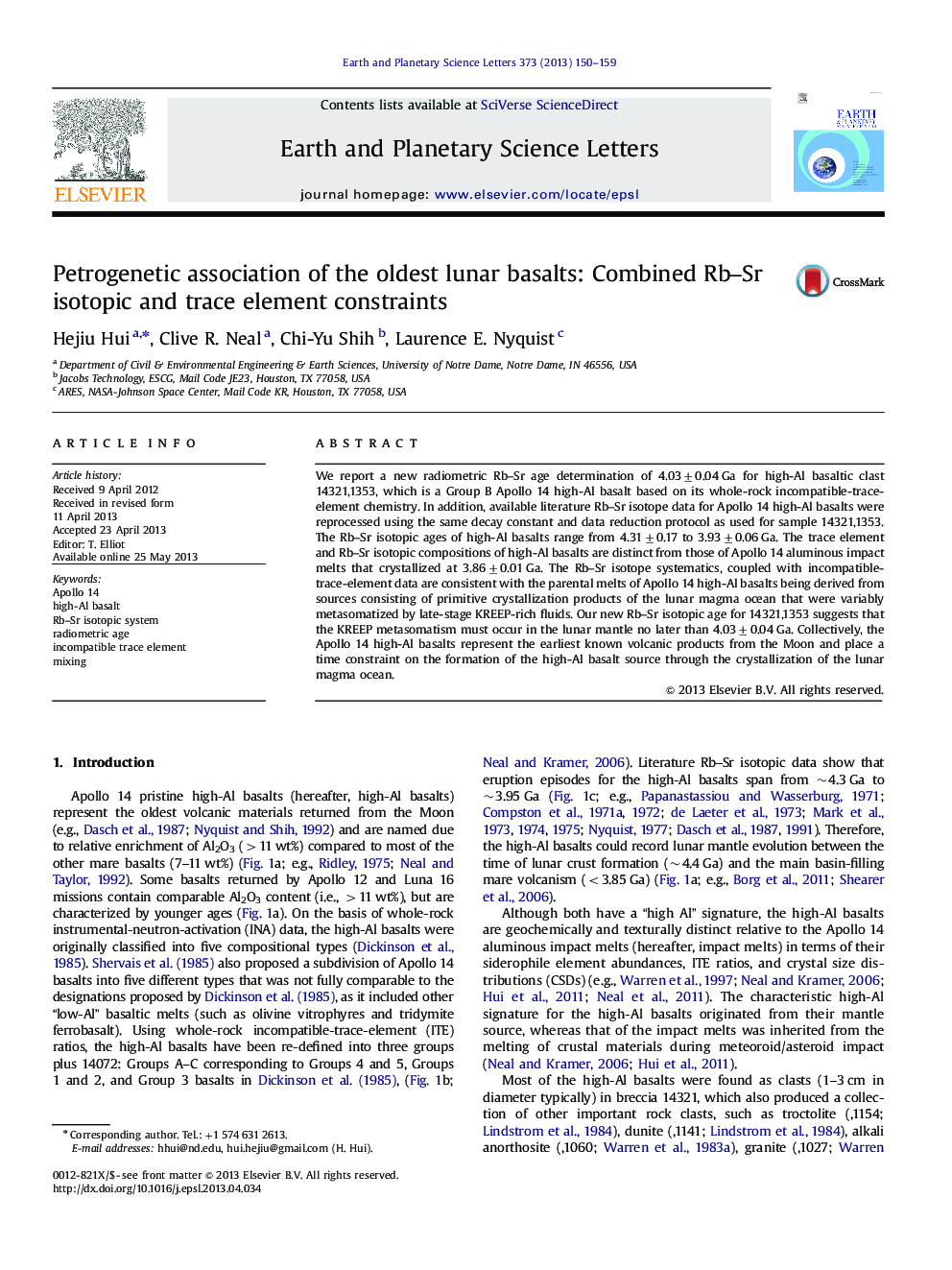| Article ID | Journal | Published Year | Pages | File Type |
|---|---|---|---|---|
| 4677074 | Earth and Planetary Science Letters | 2013 | 10 Pages |
•New Rb–Sr isotopic data for Group B high-Al basalt 14321,1353 are reported.•The Rb–Sr isotopic ages of high-Al basalts range from 4.31±0.17 to 3.93±0.06 Ga.•Source regions are correlated through variable urKREEP metasomatism of Group A basalt source.•The Rb–Sr data confirm that the high-Al basalts are distinct from impact melts.
We report a new radiometric Rb–Sr age determination of 4.03±0.04 Ga for high-Al basaltic clast 14321,1353, which is a Group B Apollo 14 high-Al basalt based on its whole-rock incompatible-trace-element chemistry. In addition, available literature Rb–Sr isotope data for Apollo 14 high-Al basalts were reprocessed using the same decay constant and data reduction protocol as used for sample 14321,1353. The Rb–Sr isotopic ages of high-Al basalts range from 4.31±0.17 to 3.93±0.06 Ga. The trace element and Rb–Sr isotopic compositions of high-Al basalts are distinct from those of Apollo 14 aluminous impact melts that crystallized at 3.86±0.01 Ga. The Rb–Sr isotope systematics, coupled with incompatible-trace-element data are consistent with the parental melts of Apollo 14 high-Al basalts being derived from sources consisting of primitive crystallization products of the lunar magma ocean that were variably metasomatized by late-stage KREEP-rich fluids. Our new Rb–Sr isotopic age for 14321,1353 suggests that the KREEP metasomatism must occur in the lunar mantle no later than 4.03±0.04 Ga. Collectively, the Apollo 14 high-Al basalts represent the earliest known volcanic products from the Moon and place a time constraint on the formation of the high-Al basalt source through the crystallization of the lunar magma ocean.
